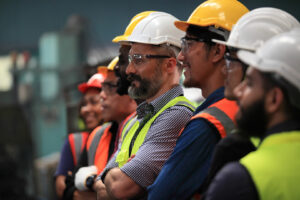
When change and unpredictability are the norm, increasing resilience in the supply chain is a key priority for most businesses but one often overlooked fact is that increasing resilience does come at a cost. Sure, the cost of doing nothing may be significant, but equally not all companies can choose to implement a raft of agile supply chain practices that will make them hardier against the disruptive forces at play in today’s economy.
Whether it’s the cost of extra stock hurting cash flow or more people managing added layers of complexity and suppliers. It could be that the culture of the business is not aligned to the delicate balance of cost optimisation vs. resilience and planning and modelling for a variety of eventualities – it’s clear that there is always a cost or hurdle associated with the implementation of this practice.
Immunity Isn’t an Option
Some businesses are more resilient to certain threats by their very nature. But no business is ever immune to changing forces. Assessing resilience is not straightforward. It’s a multi-departmental and collaborative approach to assessing:
- Market position (market leaders versus smaller players)
- Nature of the product (commodity sellers versus speciality sellers)
- Profitability (markets with higher margins versus those on razor-thin margins)
- Market or regulatory influences (export restrictions or trade barriers versus free-trade agreements)
Even then, the pervasive nature of the past few years economic and social environment means few businesses have escaped entirely unscathed except those in a unique position to capitalise on lockdowns and the disruption such as Amazon.
Just in Time Vs. Just in Case
Resilience is “the ability of an organisation to absorb and adapt in a changing environment to enable it to deliver its objectives and to survive and prosper.”
In practice, this comes down to:
- Visibility – have you got good visibility of the supply network?
- Investment – can you invest in an agile way and have processes in place for resilient practices (such as stock pre-buys?)
- Proactivity Vs. Reactivity – Do you have scenario modelling for trade-offs within your supply base, or do you deal with disruptions as they occur?
- Agility – do you have the ability to shift sourcing, manufacturing or distribution within your supply network? Or are you dependent on relatively rigid supply networks and rely upon other ways to compensate for changing conditions?
All of the above factors are a trade-off and compromise. We may be biased here, but these difficult decisions to invest and prioritise effectively rely on a single source of truth for supplier data, simple standardised processes for sourcing and selection, streamlined onboarding and great supplier relationship management. It’s why SourceDogg exists and we’re here to help you whether your objective is cost optimisation or building resilience.

Resilience, Not Rigidity
Building resilience is often distilled to mean taking a sensible approach to risk management. This spans a wide array of commercial objectives and embedded cultural nuances. These factors are not mutually exclusive and getting a clear understanding of the organisation’s strategic objectives and priorities and how risk management and resilience fits into this is incredibly important.
If you’ve got a gung-ho risk-averse culture that sells first (captures opportunity) and thinks about how you’ll fulfil it later – it’s going to be hard to invest to implement resilience in the supply chain in the unfettered need for cost optimisation and chasing down profits!
The same can be said on balance of investment in huge stocks and spare manufacturing capacity. An equilibrium of buffer and capacity is a great position to be in, but will inevitably hit the bottom line and can de-stabilise the whole operation.
Making the Case
Whatever your company culture, supply chain objectives or commercial direction, making the case for any investment is always easier when it’s powered by data.
Removing the anecdotal and quelling the emotions around the boardroom table makes the process much more professional and not quite as personal!
Culturally, understanding everyone’s objectives is a great place to start, but also sharing examples of what happens when the business isn’t resilient is extremely valuable. Not fulfilling orders due to ridiculously long lead times isn’t a finger-pointing exercise – it’s an opportunity to learn. But how can you do this without data on your supply base? Did you know about the capacity issues with current approved suppliers? What can you do next time to improve?
And in the last couple of years, we’ve seen many of our clients realise that the crisis has only exposed areas for improvement and helped them re-prioritise and re-think how they approach the supplier base so it is less likely to happen again.
There will inevitably be some internal vs. external examinations and audits, but the fact remains that using a platform like SourceDogg helps you understand the myriad trade-offs and compromises your teams face each day.
We’d love to help you understand how you can improve your supplier visibility, make data-driven decisions to invest sensibly in resilient processes, and become more proactive and agile in your operation too. Get a personalised demo today.





